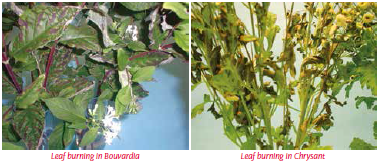Everyone loves tulips. They have Spring written all over them and are truly a flower that makes people happy. There are many different kinds of tulip with an enormous range of colors and shapes: from single to double, to crown shaped and fringed.
- Purchase flowers of sufficient maturity and quality
- Pay attention to the quality of the stem; check for sturdiness, colour and the absence of damage
- Remove wilted or damaged flowers and flowers with Botrytis
- Do not spray water on buds and flowers as this increases the chance of fungal growth (Botrytis)
- Do not use metal or antique crystal vases or containers; if you do, use an acid resistant liner.
- Do not use unprotected or contaminated organic binding material.
- Refrain from damaging the stems – remover the thorns only if abs
- Always buy fresh flowers to enjoy them as long as possible
- Ensure that you have enough cut flower food for the size of the bouquet and the most suitable vase (min. vase size is 1 litre) – this should be attached to the bouquet you buy.
- Always buy the freshest looking plants so as to enjoy them as long as possible
- Position the plant plant in a light place, some plants like direct sunlight, most don’t (see plant label if possible).
- Avoid draughts and keep away from direct heat sources.
- Ensure that there is enough water available for the plant. Use rainwater if possible.
- Soil must be kept moist, prevent excess of water at the bottom of the plant.
- Remove wilted flowers and leaves
- Enjoy your plants!
- Purchase plants of sufficient maturity and quality
- Pay attention to the activity of the plants e.g.
The composition of cut flower food is like a balanced diet for cut flowers. The universal products are a general diet for all cut flowers and the specialty flower foods are a diet that is fine-tuned according to the needs of a particular flower type. Cut flower research has shown that even within a flower type there can be variations. In practice, though, specialty flower foods are not always available. The ultimate goal is to provide cut flowers with food and water as if still intact to the mother plant. Over- or under-dosing with flower food will cause a less-than-optimum result.
This well-known phenomenon is the premature wilting of the flowers that are sensitive to vascular blockages, such as Rose, Bouvardia, Chrysanthemum and Gerbera.
Leaf yellowing is a sign of insufficient natural plant growth hormones, regulating the production of leaf green in the leaf. Before being cut, the mother plant took care of the production of these hormones. After cutting there is a shortage of these substances due to interrupted ‘juice flow’ from the mother plant.
Leaf yellow is nothing other than loss of “leaf green”, also known as chlorophyll. A number of factors influence the yellowing such as ethylene and light (see table).


